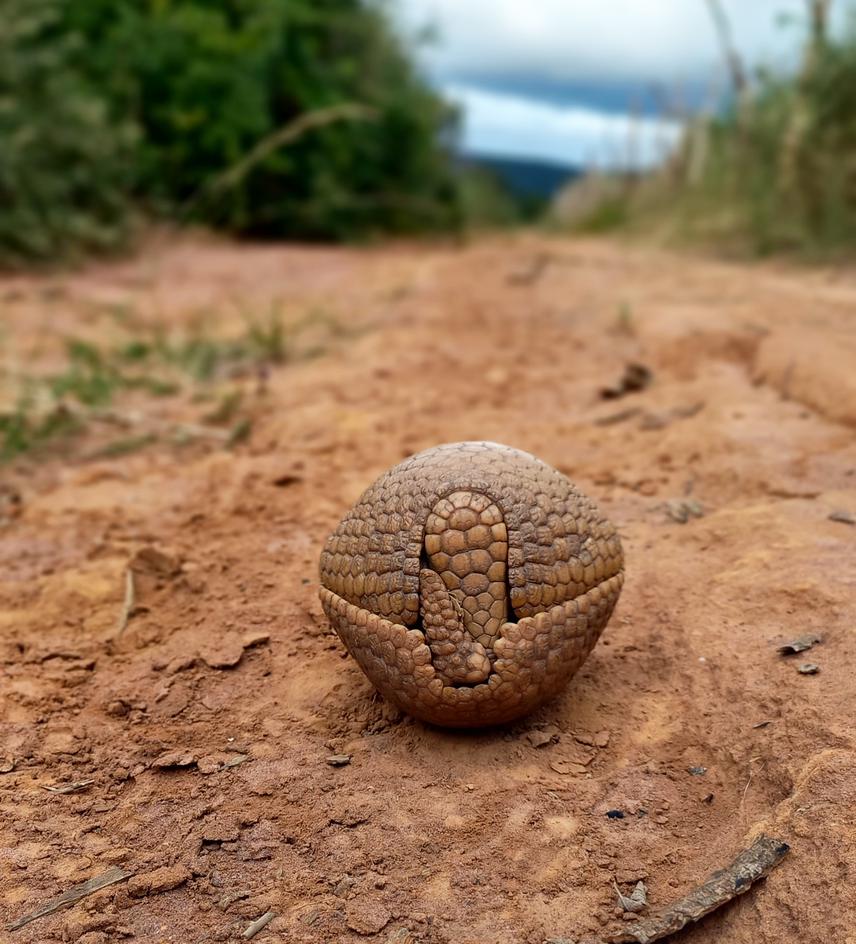Rodolfo Assis Magalhães
The Brazilian three-banded armadillo (Tolypeutes tricinctus) is a threatened species that occurs only in Brazil. It has the remarkable ability to roll up its body into a ball as a defence mechanism against predators, using its hard carapace. Despite being threatened, little is still known about its biology to provide its effective conservation, and little conservation attention has been given to this species so far. Consequently, the Brazilian three-banded armadillo is considered a priority armadillo species for research and conservation efforts.
In 2017, a new population of the Brazilian three-banded armadillo was discovered in the Sumidouro community, located in an unprotected biodiversity priority area in the Caatinga dry forests of northeast Brazil. Previous work in this community showed that the species is common in the region, despite being generally classified as a rare species throughout its distribution. In addition, it was identified as a locally popular species with high potential to be used as a conservation flagship.

Brazilian three-banded armadillo. © Rodolfo Magalhaes.
Meeting the objectives of the Brazilian national action plan for the conservation of the giant anteater, giant armadillo, and Brazilian three-banded armadillo (PAN-TATA), this project aims to establish the first participatory monitoring of the Brazilian three-banded armadillo. The monitoring will count with the participation of residents from local communities to assess population status and trends and the effects of environmental and human-induced factors on its population dynamics using camera traps. To this end, residents of local communities will be trained in how to operate camera traps and data collection. In addition, residents will participate as volunteers in the conduction of environmental education and outreach activities in local schools after receiving appropriate training. Therefore, the project will improve knowledge on the ecology of the Brazilian three-banded armadillo, which is fundamental to reassess its conservation status and plan effective conservation interventions and provide capacity building and empowerment for residents of local communities and raise their awareness of the importance of biodiversity conservation.
The information generated and impact of the conservation interventions conducted will also benefit other threatened species that occur in the region, such as the giant anteater and the northern tiger cat. Data on their populations will also be generated and sent to their respective national action plans, and the environmental activities will also address those threatened species. Thus, we expect that the Brazilian three-banded armadillo will prove to be an effective conservation flagship.